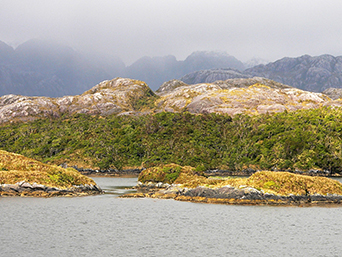Just back from southern South America and Antarctica having a firsthand look at climate change impacts.
With a surface area in excess of 14 million square kilometres Antarctica is larger than Europe, and almost twice the size of Australia. As much as 98 per cent of the continent’s surface is covered in thick, compacted ice, reaching an average depth of over a two kilometres.
Recent scientific discoveries suggest that this ‘forgotten continent’ – sometimes nicknamed the Great White Desert – may in fact have once hosted forests.
Sarah Feakins, a biogeochemist from the University of Southern California has, based on evidence taken from leaf waxes found in sediment cores extracted from the Ross Ice Shelf, determined that the Antarctic coast was once lined with beech and conifer forest.
A period of warmer climate around 15 million years ago could have had areas of the Antarctic resembling the kind of forested tundra seen today in New Zealand or parts of Chile.
Researchers found that concentrations of pollen and wax 16.4 million and 15.7 million years ago, represented two brief warming spells, each of which lasted about 30,000 years. Researchers determined that the leaf wax and pollen did not blow in from elsewhere, but came from two species of trees – podocarp conifer and southern beech – that grew on the margins of Antarctica.

Southern beech (Nothofagus) forest at the southern tip of Chile.
The presence of these species illustrates just how much warmer Antarctica was in the past and what could happen in the future if global warming is not contained.
However, due to the extreme southern placement of the continent, even a warmer Antarctica would have been without light for months on end during the winter – while summer would have been one endless day. This raises the question of how trees and other plants were able to survive when light required for photosynthesis is unavailable for months at a time.
From samples of fossilized wood, postdoctoral researcher at the University of Kansas Biodiversity Institute Patricia Ryberg analyzed rings of these ancient trees. She concluded that much of the ring structure in these samples shared characteristics with tropical trees. As tropical trees experience less of a seasonal effect, they are known to go through periods of short-term dormancy; a process that results in sporadic bursts of growth. This might well account for how the forests of Antarctica were able to survive during extended periods of darkness.
